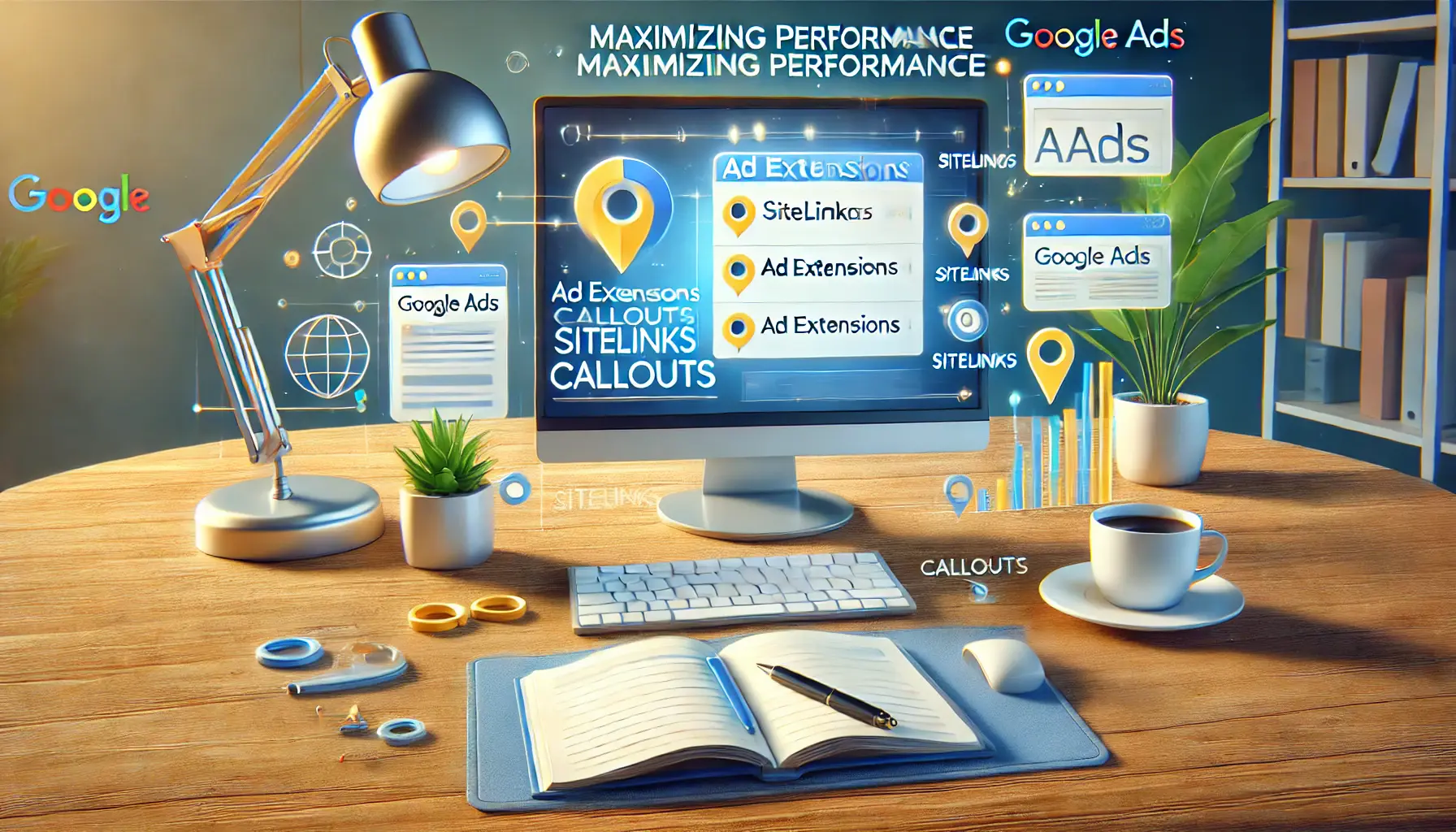With digital marketing constantly evolving, one of the most critical factors for success is ad positioning.
Your ad’s position determines whether it gains visibility or gets lost among competitors.
But how do you really ensure that your ads appear in positions where they will be most effective?
This section outlines the best ad positioning strategies to increase exposure and maximize value from your Google Ads marketing campaigns.
Recognizing how to use ad positioning starts with understanding what it is.
Knowing what ad positioning entails opens the doors to strategies that will help you stand out.
Whether you’re aiming for the top spot in Google search results or boosting your ad’s performance, mastering these tactics is crucial for success.
Understanding Ad Positioning in Google Ads
Ad positioning in Google Ads describes the rank at which your ad appears on a search engine results page (SERPSearch Engine Results Page, the page displayed by search engines after a query is made.).
It’s important not to confuse ad positioning with ad rank, though the two are closely related.
Ad rank is defined as the positioning of your ad, determined by a combination of your bid, quality score, and the expected impact of ad extensions.
The ad position, on the other hand, is simply where your ad appears on the page.
The higher your ad positioning, the greater the chances of users seeing and clicking on your ad.
Achieving a top position requires more than just high bids; it’s about a combination of factors that contribute to making your ad visible.

Visual representation of the key factors that influence ad positioning in digital marketing.
Key Factors Affecting Ad Positioning
- Ad Rank: The higher your ad rank, the better your ad positioning will be. Ad rank is calculated based on your bid and quality score.
- Quality Score: This score is based on how relevant your ad is to the user’s search query, the performance of your landing page, and the ad’s click-through rate (CTR).
- Ad Extensions: Adding extensions such as call buttons or location details can improve your ad’s ranking and overall positioning.
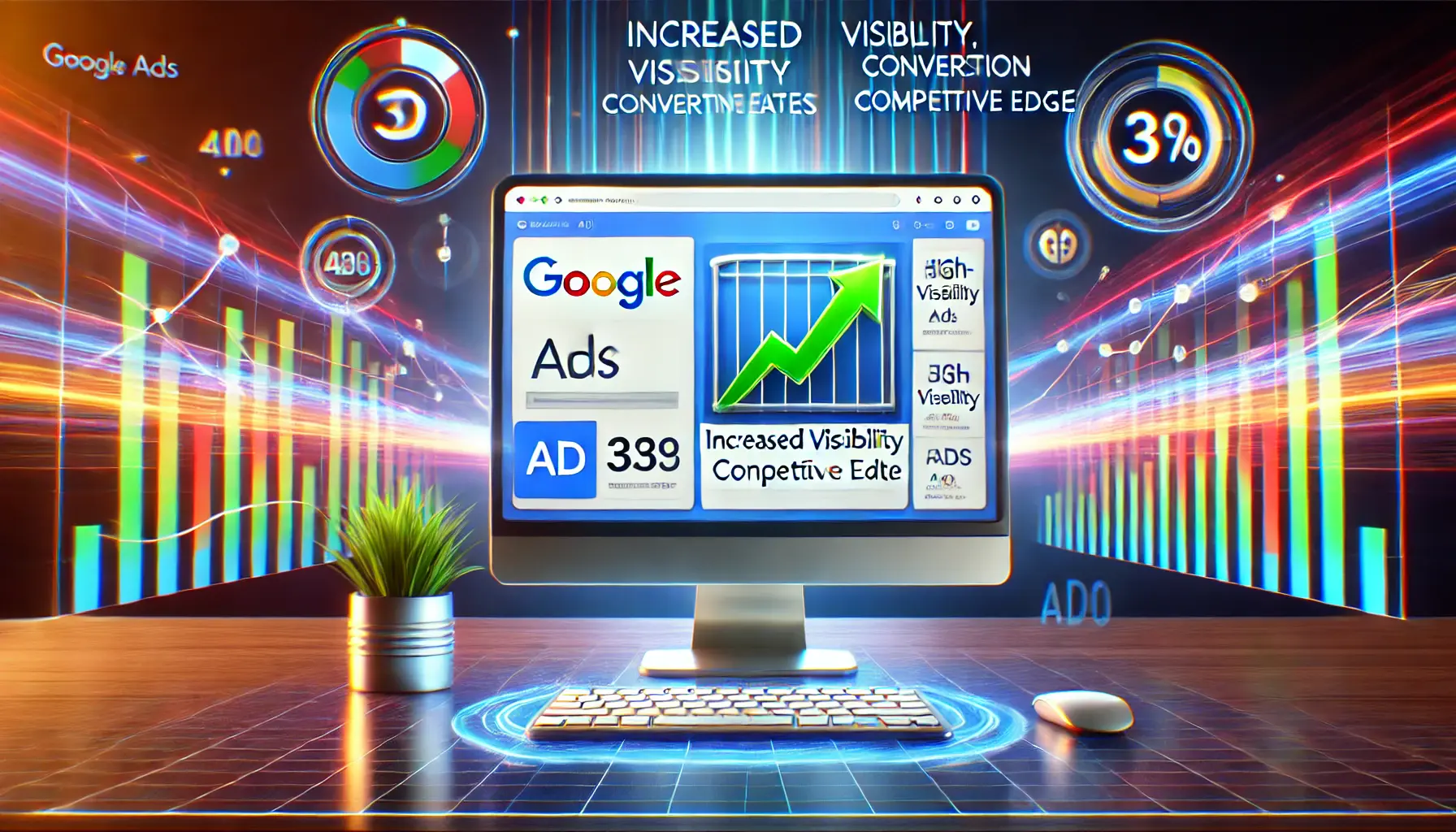
Illustration of why ad positioning is crucial for digital marketing success.
Why is Ad Positioning Important?
Securing a high ad position offers several key benefits:
- Increased Visibility: Ads in the top positions are much more likely to be seen by users, leading to higher click-through rates.
- Better Conversion Rates: When your ad is easily accessible and relevant to the user’s search, it increases the likelihood of converting clicks into sales or leads.
- Competitive Edge: A top ad position allows you to outperform competitors, especially in highly competitive industries.

Illustration of key factors influencing ad positioning in digital marketing.
Key Factors Influencing Ad Positioning
Several key factors influence where your ad appears on the search results page:
- Bid Amount: Higher bids increase the chances of a better ad position, but bidding alone is not enough.
- Ad Relevance: Google rewards ads that are highly relevant to the search query, improving the quality score and ultimately the ad positioning.
- Expected Click-Through Rate (CTR): Ads that are predicted to get more clicks are more likely to secure a higher position.
- Landing Page Experience: A well-optimized landing page with relevant content contributes to a higher quality score and better ad placement.
Ad positioning is the rank at which your ad appears on a search engine results page (SERP), not to be confused with ad rank.
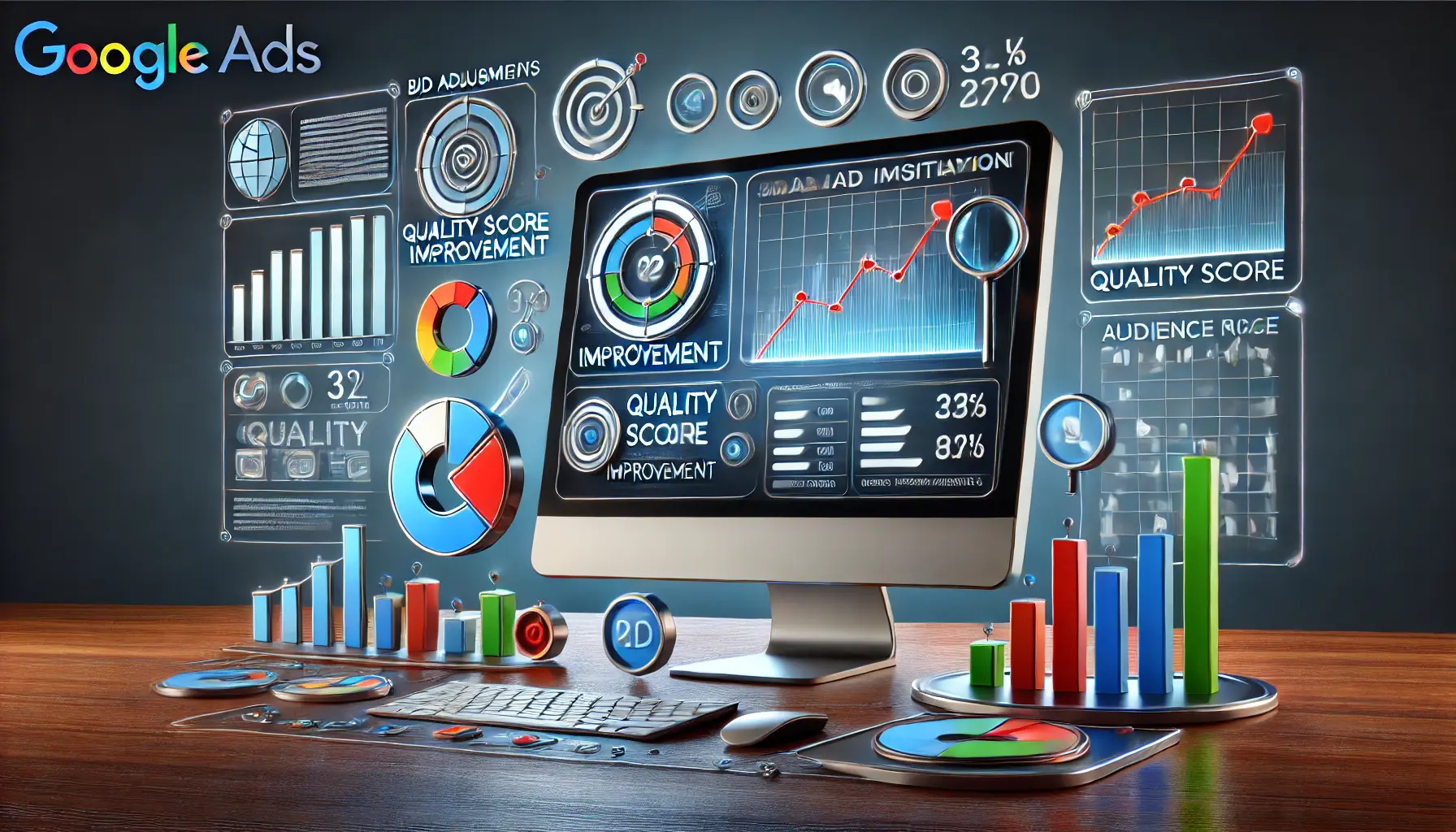
Illustration of top strategies to improve ad positioning in digital marketing.
Top Ways to Improve Ad Position
The process of attaining higher ad positioning in Google Ads requires a mix of strategic bidding, quality optimization, and targeting precision.
Although it is highly essential, it’s not just about having the highest bid for the top spot.
Google Ads works on a system where relevance and user experience are just as important as what you’re willing to pay.
Here are the best ways to improve ad positioning and get maximum value from every dollar spent on ads.

Illustration of the process of optimizing quality score for better ad positioning in Google Ads.
Optimizing Quality Score for Better Positioning
One of the most influential factors that determine ad positioning is your ad’s quality score.
A high-quality score decreases the cost per click while increasing the possibility of appearing in top positions.
Here’s how you can optimize your quality score:
- Ad Relevance: Ensure your ads have high relevance to the intent of the keywords you are targeting. The more relevant your ad is, the better your quality score will be.
- Landing Page Experience: Google evaluates whether your landing page is relevant, transparent, and easy to navigate. A well-optimized landing page, one that loads quickly and contains relevant content, significantly improves your ad score.
- Expected CTR (Click-Through Rate): Ads expected to result in more clicks are ranked higher. Testing various ad formats, headlines, and calls to action can help raise your CTR.
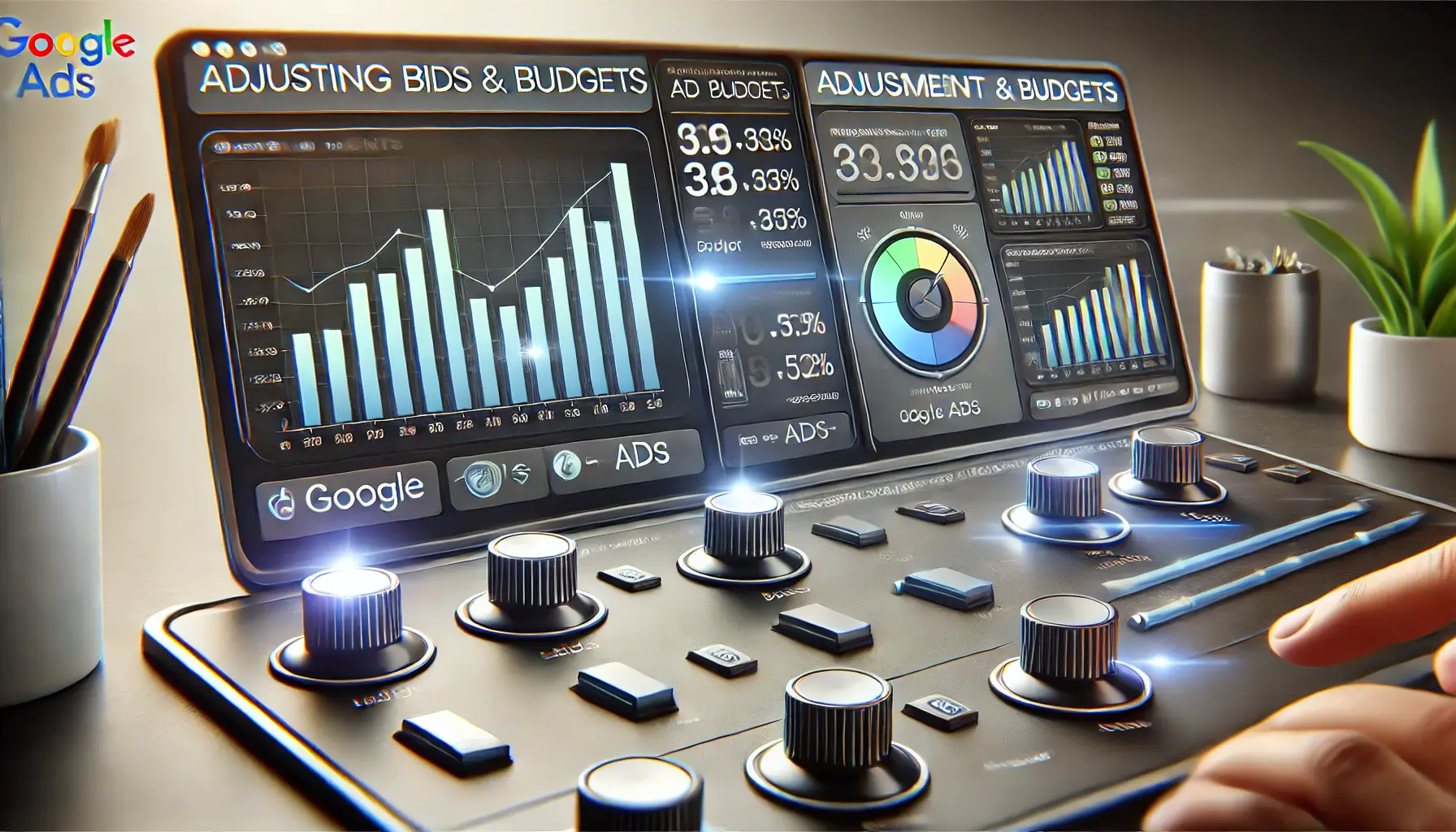
Illustration of adjusting bids and budgets in Google Ads to optimize ad performance.
Adjusting Bids and Budgets
You don’t always need to outbid competitors by a huge margin, but strategic bidding can help you secure higher ad positions:
- Use Automated Bidding Strategies: Google Ads offers automated bidding strategies like ‘Target CPA’ (Cost-Per-Acquisition) or ‘Maximize Conversions,’ which adjust bids in real-time to achieve your desired outcomes while improving ad positioning.
- Manual Bidding for Precision: Manual bidding gives you control to increase or decrease bids based on factors like device type, time of day, or geographical location to improve performance in high-value placements.
- Focus on Bid Modifiers: Adjust bid modifiers to target specific audiences or prioritize certain devices and locations to improve your ad’s visibility in prime spots.

Illustration of targeting the right audience to achieve higher ad rankings in Google Ads.
Targeting the Right Audience for Higher Rankings
Your ad will perform better if it is shown to the right audience.
To optimize your ad positioning, your targeting has to be precise.
You can improve your ad placement by:
- Demographic Targeting: Use detailed targeting in Google Ads to focus on specific demographics like age, gender, and income level to ensure your ads reach the most relevant audience.
- Location-Based Targeting: Narrow your geographic targeting to locations where your target audience is most likely to engage. Simple bid adjustments based on geographic data can improve ad positioning, especially in premium locations.
- Retargeting Strategies: Apply retargeting to users who have previously visited your website. Ads served to familiar audiences are more likely to garner clicks, improving your ad positioning.
Improving quality score is essential for better ad placement, as it affects costs and visibility.

Illustration of how ad extensions can increase visibility and improve ad performance.
Increasing Visibility with Ad Extensions
In Google Ads, ad extensions are powerful features that help you achieve better ad positioning and enhance visibility.
These extensions add more information, such as contact details, additional links, or promotional offers, making your ad more attractive to users.
By adding value to your ad without increasing your bid, ad extensions play a crucial role in securing higher ad positions and driving more traffic to your website.
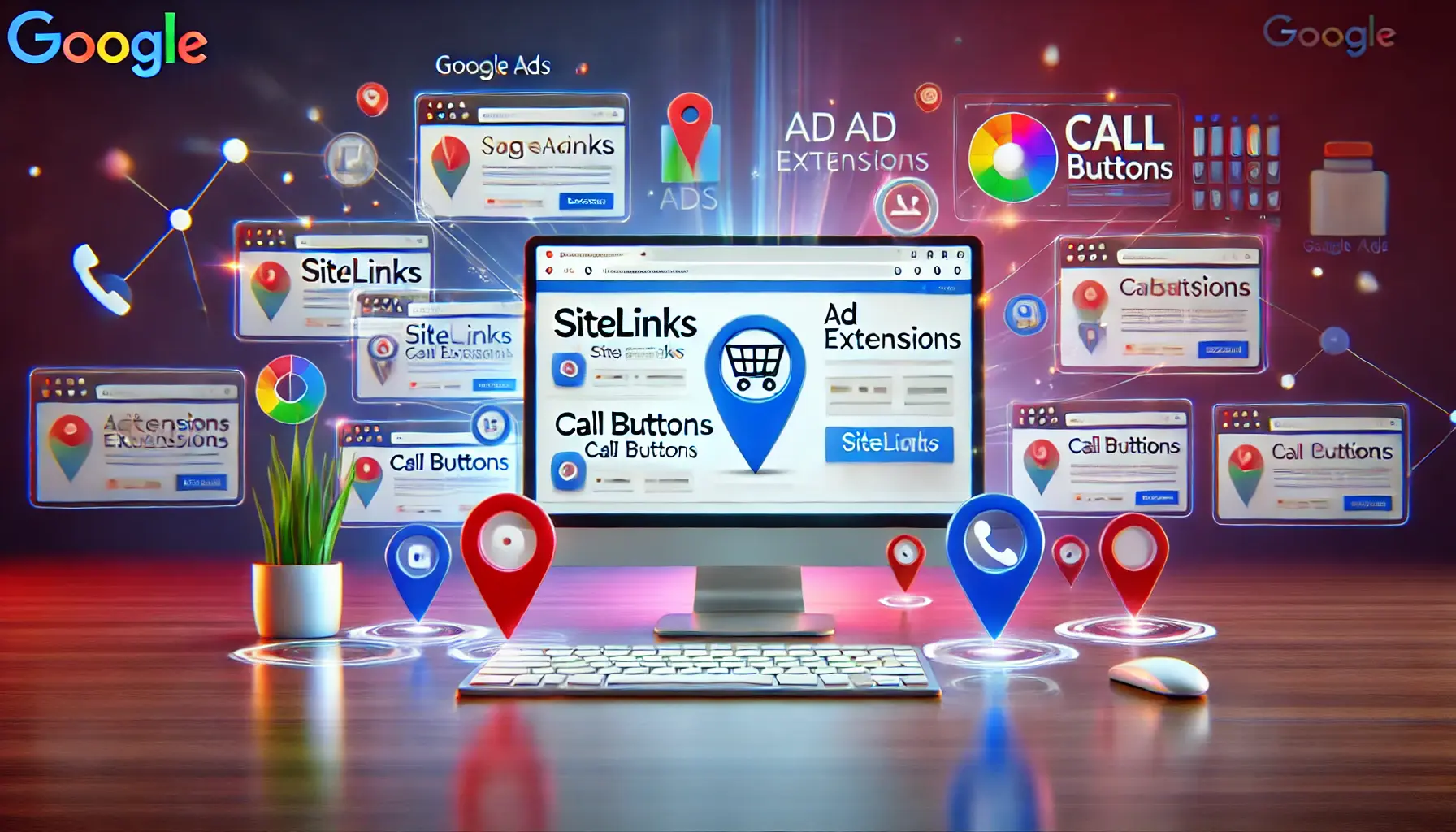
Illustration of different types of ad extensions in Google Ads, enhancing visibility and interaction.
Types of Ad Extensions in Google Ads
There are several types of ad extensions available in Google Ads, each serving a specific purpose to enhance your ad:
- Sitelink Extensions: These allow you to add extra links below your main ad, directing users to specific pages on your website, such as a product page or a contact form. Sitelinks can improve CTR and ad positioning, making your ad more relevant and useful to users.
- Call Extensions: Show your phone number directly in the ad, making it easier for users to contact your business. This can help increase CTR and is highly effective for businesses that rely on direct calls for conversions.
- Location Extensions: Add your business address and a map marker to the ad, which is especially useful for local businesses looking to drive foot traffic.
- Callout Extensions: Highlight key benefits or offers, such as ‘Free Shipping’ or ’24/7 Customer Support,’ to make your ad stand out even more.
- Structured Snippet Extensions: Provide additional information about your products or services in a structured format. This helps users make more informed decisions, improving both CTR and ad positioning.

Illustration of how ad extensions impact ad positioning by improving visibility and rankings.
How Ad Extensions Impact Ad Positioning
Using ad extensions not only makes your ad more appealing but also directly impacts your ad positioning.
Google’s algorithm considers the presence of ad extensions when calculating ad rank, meaning ads with extensions often have a distinct advantage over those without.
Here’s how ad extensions improve ad positioning:
- Improved CTR: Ads with extensions generally experience higher click-through rates, which is a key factor in quality score. A higher CTR leads to better ad positioning.
- Better Ad Relevance: Extensions allow you to provide more relevant information to users, improving your ad’s relevance score, which in turn boosts your ad rank.
- Enhanced User Experience: Ad extensions make it easier for users to find what they need quickly, leading to better user engagement and higher ad positioning.
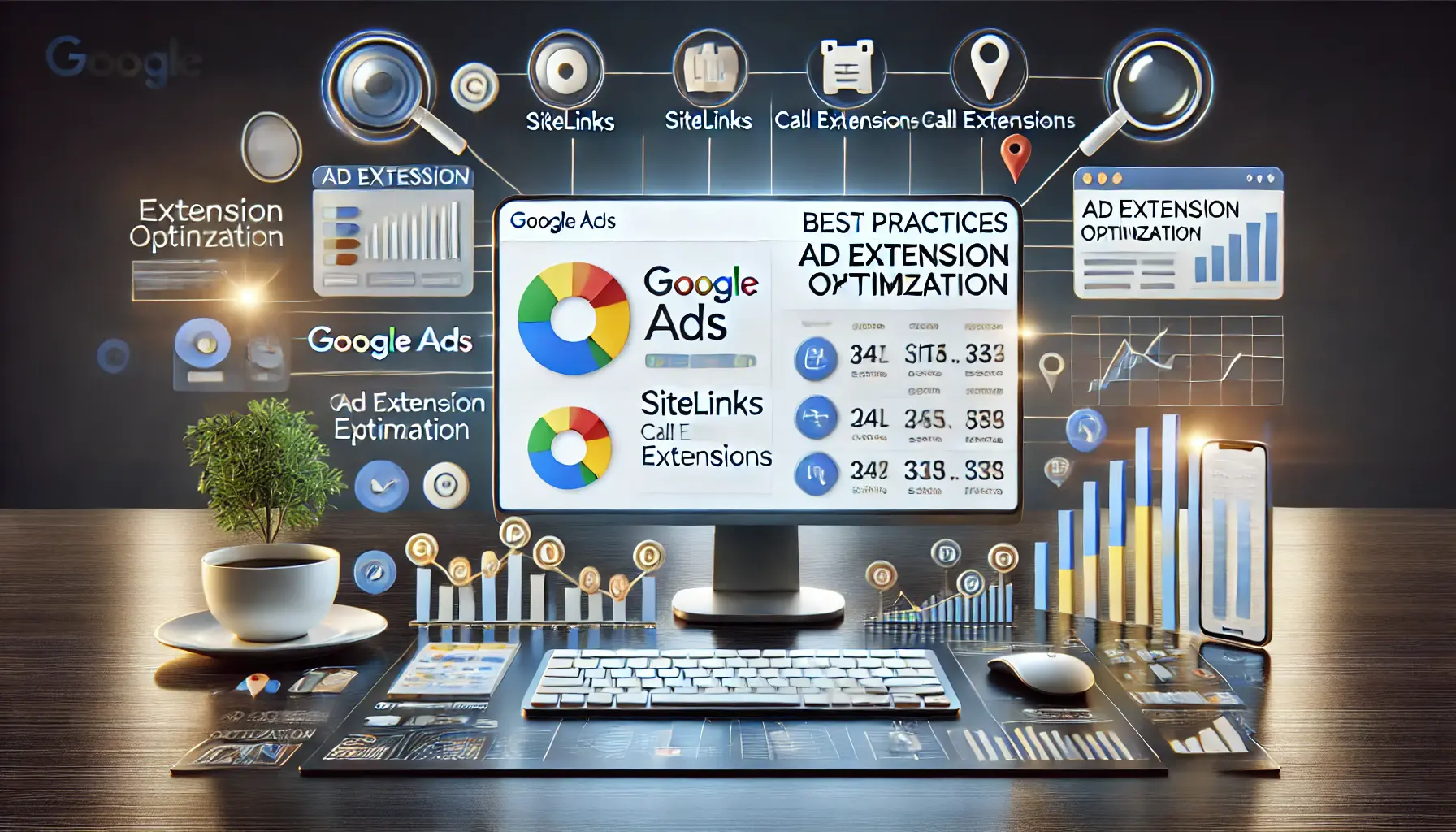
Illustration of best practices for optimizing ad extensions for better visibility and engagement in Google Ads.
Best Practices for Ad Extension Optimization
To get the most out of ad extensions and improve your ad positioning, follow these best practices:
- Use All Relevant Extensions: Google prioritizes ads with multiple extensions, so make sure to use as many relevant extensions as possible to maximize your ad’s visibility and ad positioning.
- Customize Extensions for Each Campaign: Tailor your ad extensions to suit the specific goals of each campaign. For instance, location extensions are ideal for local campaigns, while sitelinks work better for e-commerce campaigns.
- Test Different Extension Combinations: Regularly test different extension combinations to see which ones improve CTR and ad positioning.
- Monitor Extension Performance: Track the performance of each extension and make adjustments as needed to optimize your ads for the best possible results.
Ad extensions like sitelinks and call extensions enhance ad visibility and positioning.

Illustration of measuring and optimizing ad position performance in Google Ads.
Measuring and Optimizing for Ad Position Performance
If you want to effectively optimize your ad positioning to ensure that your campaigns are yielding the best possible results, it is crucial to regularly analyze and monitor performance.
Google Ads provides a variety of tools and metrics that allow advertisers to track ad positioning and make data-driven decisions.
By carefully examining these metrics, you can find opportunities for further improvement, adjust your strategies, and increase the overall effectiveness of your campaigns.

Illustration of using Google Ads metrics to track and optimize ad positioning.
Using Google Ads Metrics to Track Positioning
Google Ads provides several key metrics for measuring and analyzing ad positioning.
Understanding these metrics is crucial to identifying where your ads are appearing and how to improve their placement.
Some of the most important metrics include:
- Average Position: This metric shows the average rank in which your ad is appearing on the search engine results pages. A lower number means your ad is appearing higher on the page.
- Impression (Absolute Top) %: This metric informs you of the percentage of your ad impressions that have appeared in the very top position, above all organic search results.
- Impression (Top) %: This metric indicates the percentage of impressions where your ad appeared above the organic search results but not necessarily in the very top spot.
- Search Lost IS (Rank): This reflects the percentage of impressions lost due to a low ad rank, which can help assess if low bids or quality score are hurting ad positioning.

Illustration of identifying trends and making strategic adjustments to digital marketing campaigns.
Identifying Trends and Adjusting Campaigns
For instance, if your ads consistently appear in lower positions, you may need to raise bids, improve your quality score, or adjust your targeting.
Better ad relevance generally corresponds to better ad positioning.
By rewriting your ad copy to better match targeted keywords, you can improve your position on the search results page.
- Adjusting Bids: If your ad performance is poor, you may need to increase your bids. This should be done strategically, balancing cost with expected returns.
- Refining Targeting: Continuously review your targeting options, including location, demographics, and devices, to ensure your ads are reaching the most relevant audience. Better-targeted ads tend to perform better and achieve higher positions.
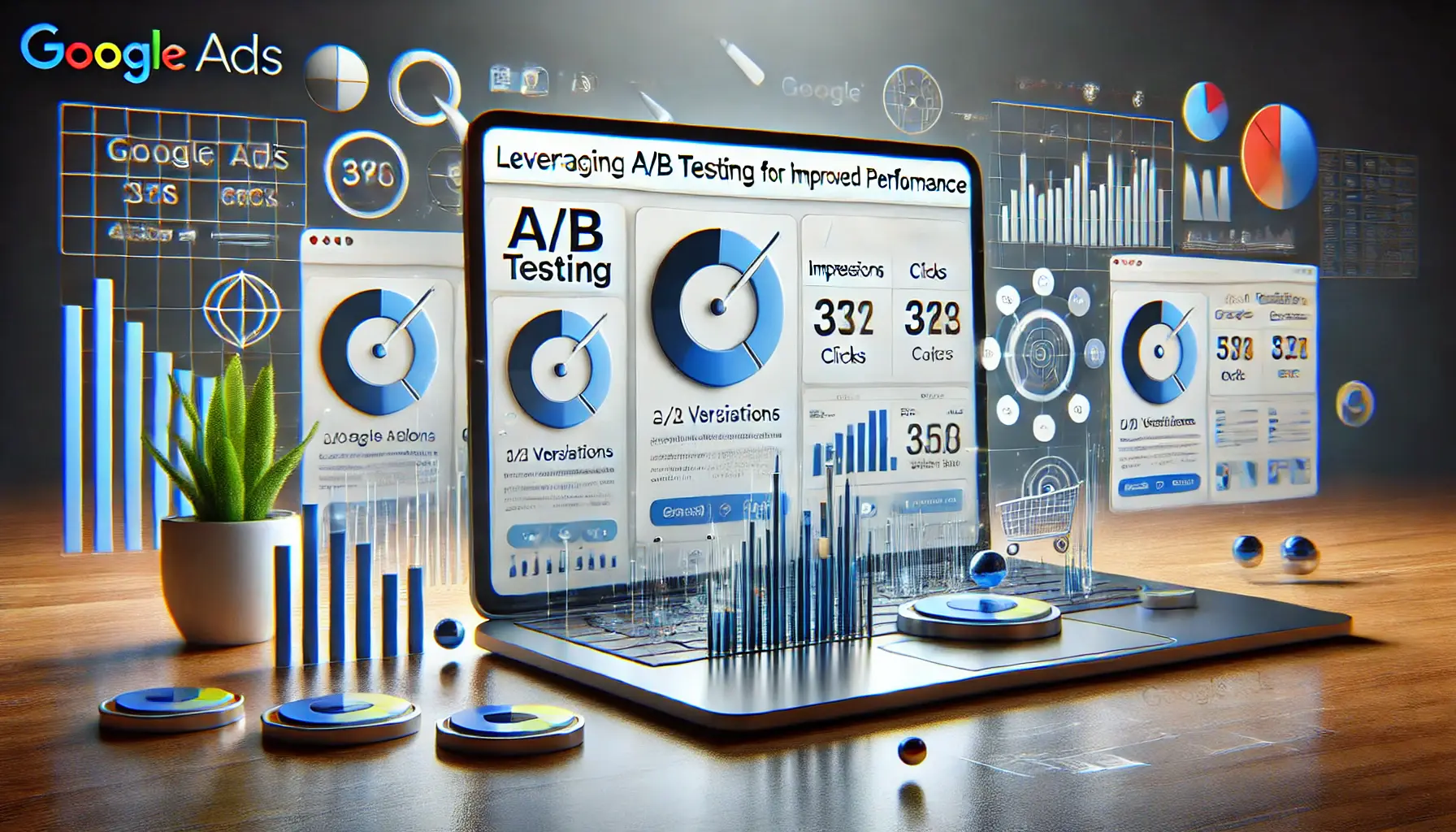
Illustration of leveraging A/B testing to optimize ad performance in digital marketing.
Leveraging A/B Testing for Improved Ad Performance
A/B testing, also known as split testing, is one of the most effective methods for improving ad positioning.
It involves running two different versions of your ad to determine which performs better.
A/B testing allows you to refine everything from headlines to ad copy, targeting settings, and bid strategies to optimize performance.
- Testing Ad Copy Variations: Run multiple versions of your ad with different headline variations, descriptions, and calls-to-action to identify which combination yields better positioning and performance.
- Testing Multiple Bid Strategies: Compare the performance of manual and automated bidding strategies to determine which one delivers higher ad positions and better cost-per-click (CPC) rates.
- Testing Targeting Options: Experiment with different audience segments, geographic locations, and devices to figure out which groups or options give you the most viewability, ensuring your ads appear in the best ad positions.
Regular analysis of ad metrics ensures better performance and strategic improvements.

Illustration of avoiding common mistakes in ad positioning to improve campaign success.
Avoid Common Mistakes in Ad Positioning
Even with the best of intentions, advertisers tend to commit common errors when it comes to ad positioning within Google Ads.
These mistakes often result in wasted budgets, a reduction in click-through rates (CTRClick-Through Rate, the percentage of users who click on an ad after seeing it.), and missed opportunities for broader visibility.
By understanding these mistakes and taking steps to avoid them, you can enhance your ad performance and ensure your ads show up in top positions.
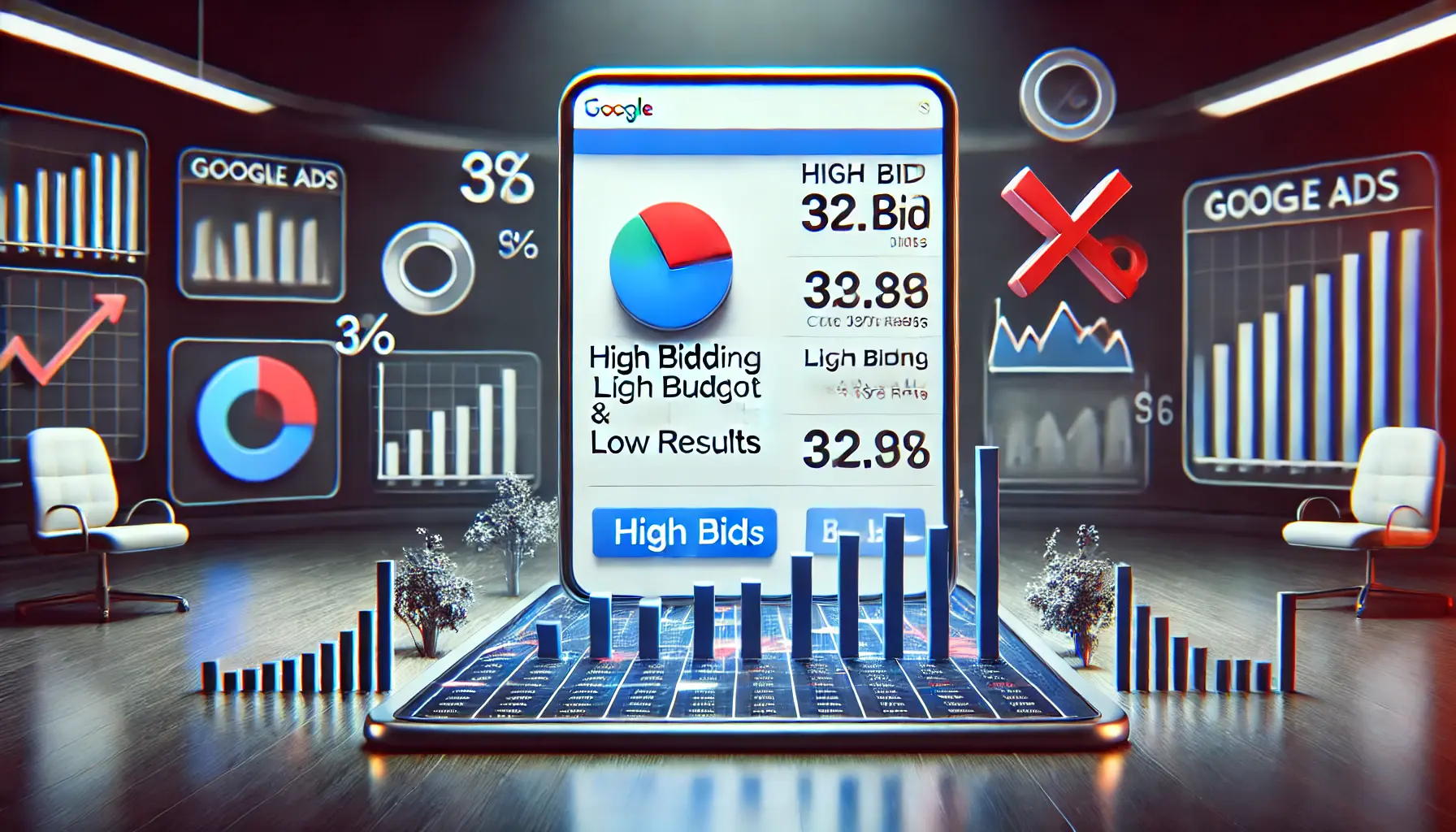
Illustration of the inefficiency of overbidding without strategic optimization in digital marketing.
Overbidding Without Results
One of the most frequent mistakes in ad positioning is overbidding in hopes of securing a top position.
While higher bids can help improve positions, simply raising your bid without paying attention to other key factors—such as quality score and ad relevance—may lead to unintended outcomes.
Why Overbidding Without Strategy Hurts Your Campaign:
- Wasted Budget: If you continuously outbid competitors without focusing on improving ad quality, you’re likely losing money without seeing proportional returns. This can quickly burn through your ad budget, making it difficult to scale your campaigns long-term.
- Low ROI: Even ads that reach top positions through high bids may fail to convert if relevance or landing page experience is lacking. You won’t achieve a high ROI if your focus is primarily on bids instead of overall ad performance.
- Unoptimized Quality Score: Google prioritizes ads with high-quality scores. If you don’t optimize ad relevance, CTR, and other factors contributing to quality score, overbidding alone won’t secure top ad positions.

Illustration of the negative impact of ignoring quality score in digital marketing.
Ignoring the Importance of Quality Score
Quality score is one of the most critical elements that determine where your ad ranks on the SERP.
Ignoring it can lead to poor performance, even if you’re placing high bids.
Here’s why quality score matters:
- Relevance Matters: Ads with high-quality scores are highly relevant to user queries, which improves both ad positioning and CTR. Failing to optimize relevance can lower your rankings.
- Cost Efficiency: A better quality score lowers your cost-per-click (CPC), meaning you pay less for higher ad positioning. Ignoring quality score leads to paying more for worse results.
- Long-Term Benefits: Improving your quality score ensures sustained high performance. Google rewards ads with better scores by giving them more prominent placements over time.
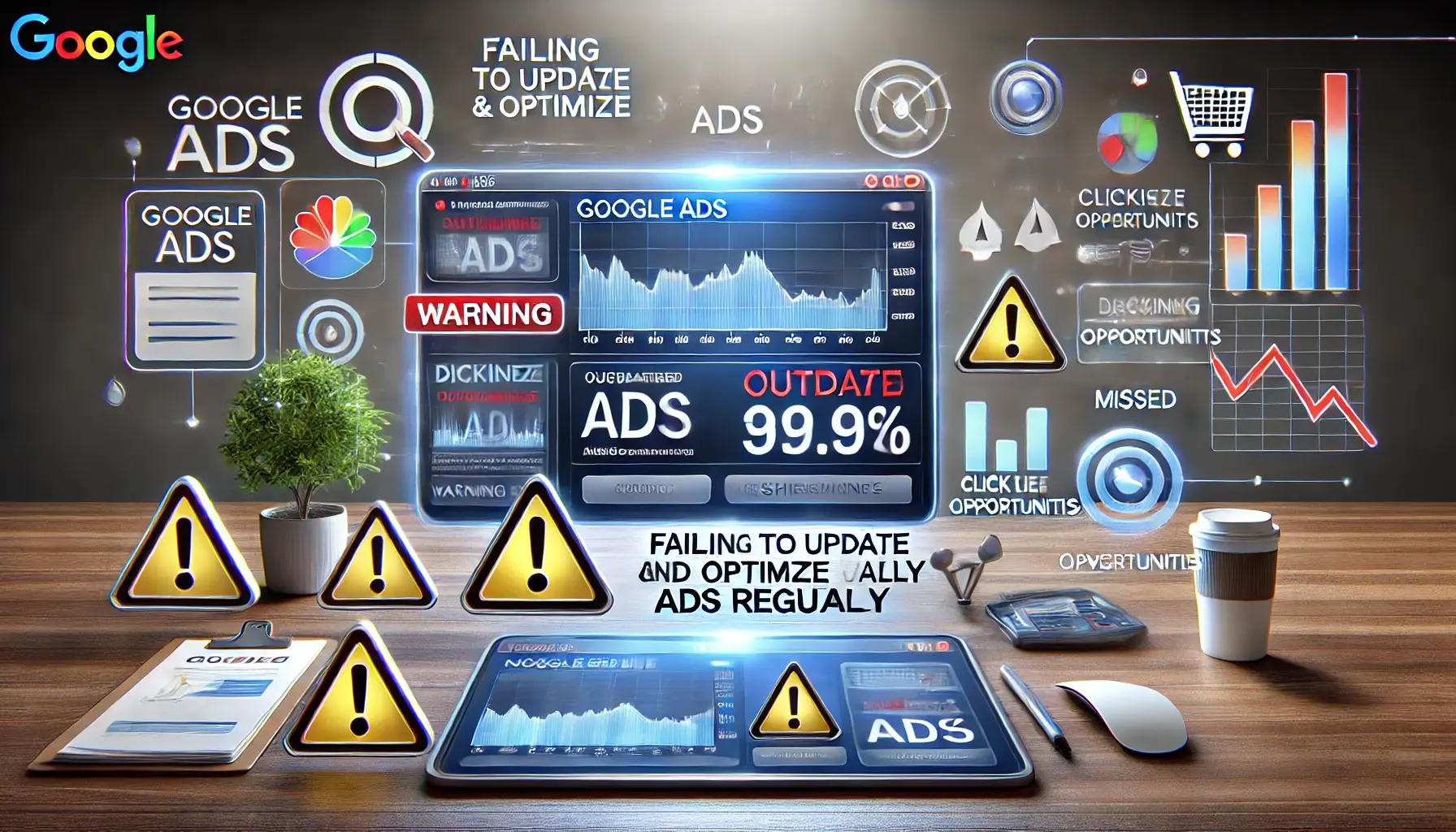
Illustration of the consequences of failing to regularly update and optimize ads in digital marketing.
Failing to Update and Optimize Ads Regularly
Many advertisers make the mistake of setting up campaigns and failing to regularly update and optimize their ads, which inevitably leads to a drop in performance over time.
Here’s why continuous optimization is essential:
- Ad Fatigue: Users may become less responsive to your ads if they’ve seen them repeatedly without changes. Refreshing your ad creative with new messaging, visuals, or offers can keep users interested, improving ad positioning.
- Responding to Market Changes: Consumer behavior and trends constantly change. Failing to adjust your ads accordingly can hurt their effectiveness. Regularly updating your ad copy, targeting, and bidding strategies helps maintain competitive ad positioning.
- Improvement in CTR and Conversion Rates: Regular testing and optimization show what works best for your audience. Higher CTRs lead to higher quality scores and better ad positioning.
By avoiding these common mistakes and focusing on a holistic approach—including bid management, quality score optimization, and regular updates—you will be better positioned to maintain high ad positioning and achieve overall ad success.
Avoid overbidding and neglecting quality score optimization to maintain ad positioning.

Illustration of mastering ad placement to achieve maximum visibility in digital marketing.
How to Master Ad Placement to Get Maximum Visibility
With digital advertising being an extremely competitive field, the art of ad positioning becomes critical in reaping success from running Google Ads campaigns.
By focusing on key strategies like optimizing quality score, using ad extensions, and continuously analyzing your performance, you can ensure that your ads gain higher visibility, better click-through rates (CTR), and improved conversion rates.
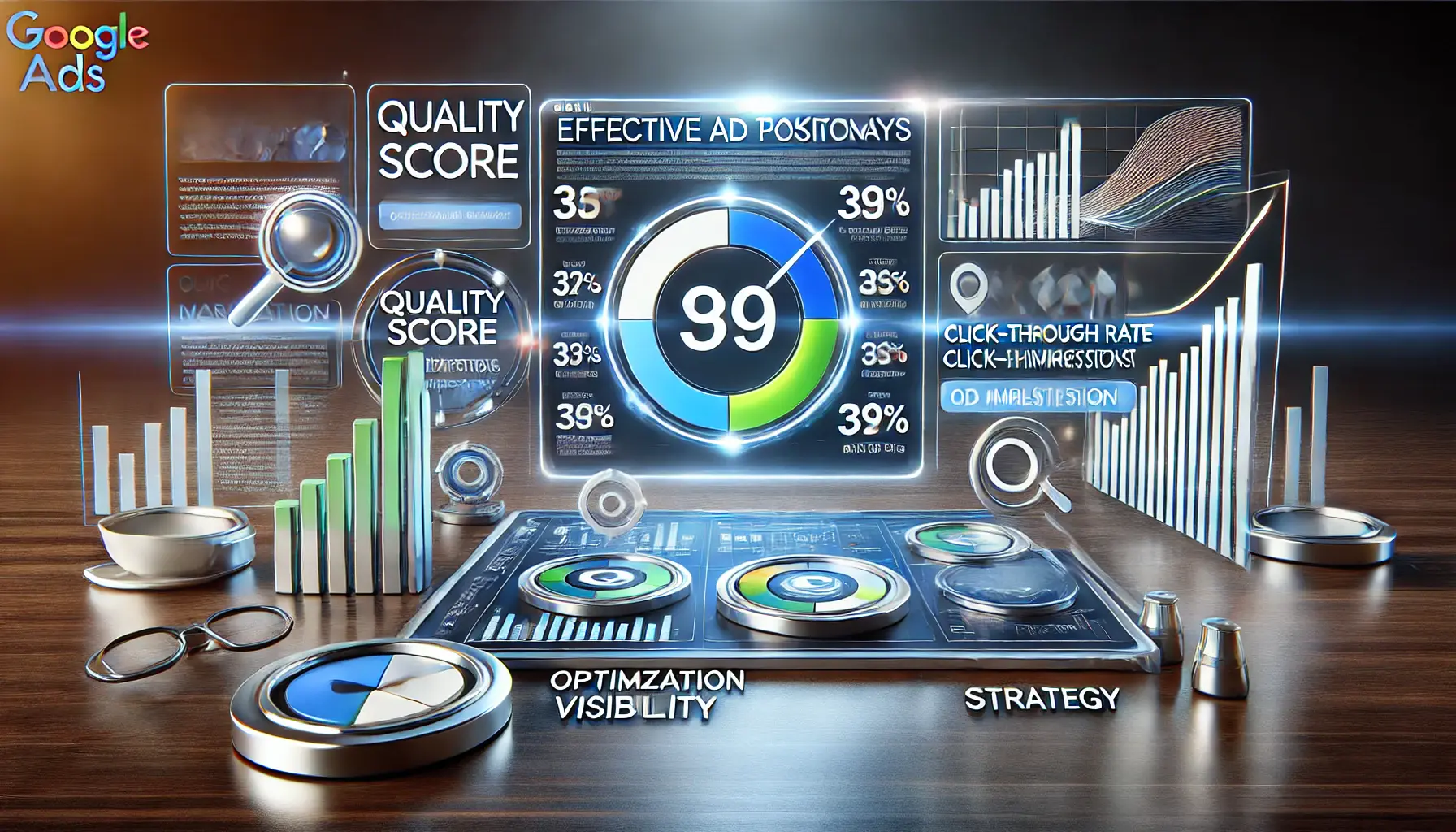
Illustration of key takeaways for effective ad positioning in digital marketing.
Key Takeaways for Effective Ad Positioning
To summarize, here are the key actions you should take to improve your ad positioning:
- Prioritize improving your quality score by ensuring your ads are highly relevant to user queries, optimizing landing page experience, and continuously improving your click-through rates.
- Leverage ad extensions to provide additional value to your ads, making them more attractive and boosting their rank on the search engine results page (SERP).
- Regularly analyze and monitor ad positioning metrics using Google Ads tools, allowing you to adjust bids, optimize ad copy, and refine your targeting for better performance.
- Use A/B testing to experiment with different ad variations, bid strategies, and targeting options, helping you identify what works best for your audience and improves your ad rank.
- Avoid common mistakes like overbidding without focusing on quality score, neglecting to optimize relevance, and failing to update ads regularly.

Illustration of the long-term benefits of optimizing ad positioning for sustained growth and efficiency.
The Long-Term Benefits of Optimizing Ad Positioning
When done correctly, optimizing ad positioning offers long-term benefits.
You not only increase your visibility and engagement with potential customers, but you also achieve better cost efficiency.
The more competitive your ads are, the lower the cost per click, yielding a better return on investment over time.
By avoiding common pitfalls and staying updated with evolving consumer behaviors and market trends, you will stay ahead in the digital advertising game.
This ensures that your ad positioning positively impacts your campaigns, making them scalable and sustainable over time.

Illustration representing the successful conclusion of a digital marketing strategy focused on ad positioning.
Conclusion
The holistic approach to success in ad positioning lies in effectively optimizing quality scores, utilizing ad extensions, analyzing performance metrics, and continuously refining your strategy.
By understanding the importance of each of these factors and avoiding common pitfalls, you will be able to achieve the right results from your Google Ads campaigns.
Keep testing, optimizing, and refining your approach to ensure that your ads consistently rank at the top, driving better engagement, higher conversions, and long-term success.
Optimizing quality score, ad extensions, and testing regularly ensures maximum ad visibility.
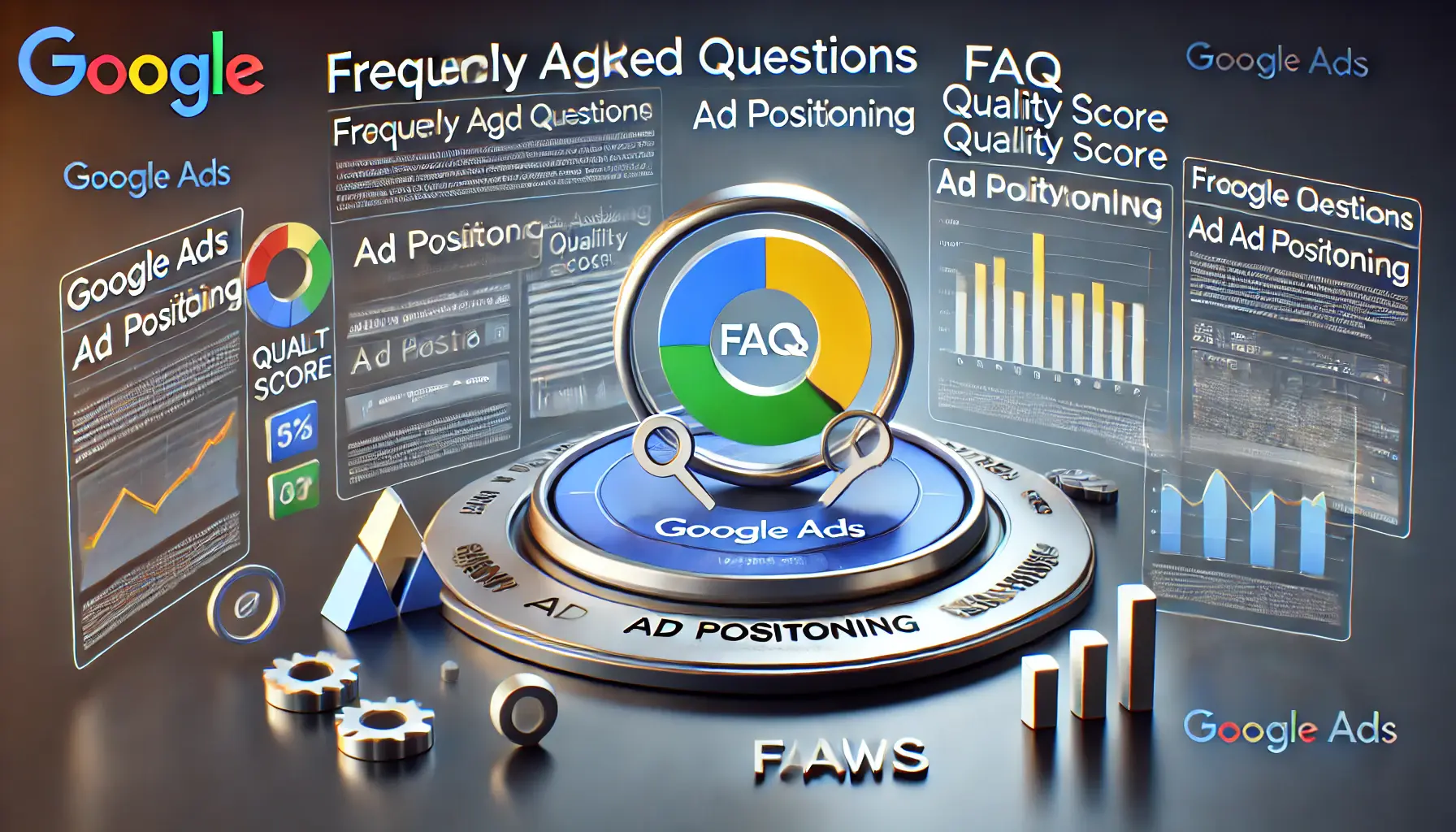
Illustration representing FAQs related to ad positioning in Google Ads.
Your campaigns can be managed by an agency specialized in Google Ads, check out our service page.
Google Ads Ad Positioning-Related FAQs
Below are some of the most frequently asked questions related to ad positioning and its importance in Google Ads campaigns.
These short answers will help you better understand the concept.
Ad positioning mainly refers to the ranking of your ad on a search engine results page (SERP).
Higher positioning increases visibility and engagement with your target audience.
Higher ad positioning improves visibility, click-through rates (CTR), and conversions.
It also lowers your cost-per-click (CPC), providing better value for your advertising spend over time.
Ad positioning is influenced by quality score, bids, ad relevance, and user experience.
Google Ads ranks ads based on a combination of these factors to determine placement.
To improve ad positioning, focus on optimizing quality score, increasing ad relevance, using ad extensions, adjusting bids, and regularly analyzing performance metrics.
No, higher bidding does not guarantee better ad positioning.
Google also considers quality score, ad relevance, and user experience when determining ad position.
Quality score is crucial in ranking ad positioning.
A higher quality score results in better rankings, lower CPC, and overall better campaign performance by making your ad more relevant and appealing.
Ad extensions offer additional value by providing users with more information.
This improves relevance, click-through rates, and overall ad positioning on the SERP.
Monitoring your ad positioning metrics should be done at least once a week.
Regular analysis allows you to make timely adjustments for better performance and maximum results.
Common mistakes include overbidding without focusing on quality score, ignoring ad relevance, failing to update ads regularly, and neglecting to use ad extensions.
Avoid these to maintain strong ad positioning.








